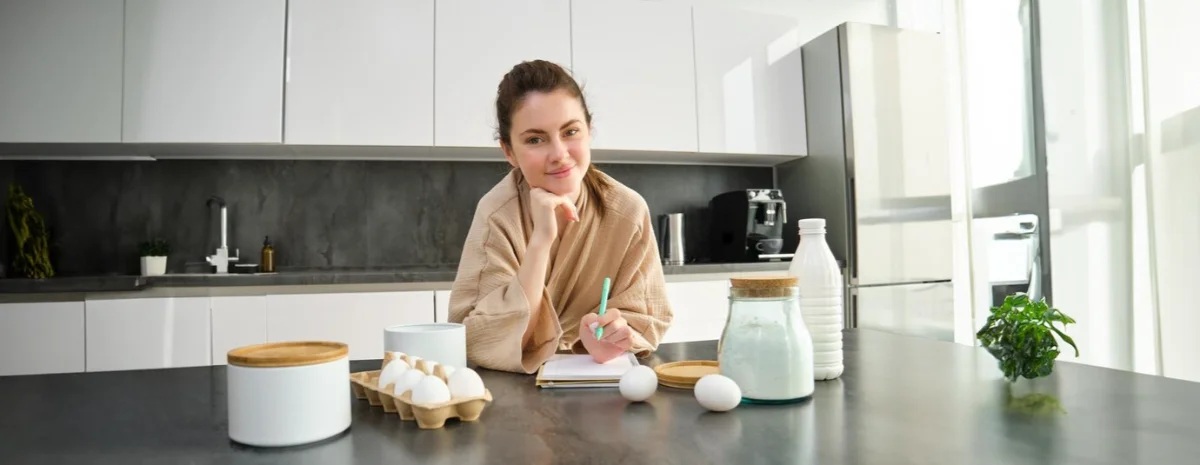
How to Create a Zero-Waste Minimalist Kitchen
A zero-waste kitchen is a great way to move towards sustainable living and a minimalist lifestyle. Those sustainable kitchen tips and information can reduce the waste you produce, save you money, and provide you with an eco-friendly food-prepping space. From brand-new kitchens to minor tweaks, switching to a sustainable and minimalistic kitchen is far less daunting than you might think.
This guide provides practical strategies for creating a zero-waste kitchen. It covers everything from choosing sustainable materials to more innovative cooking and storage habits. Let’s see how to make your kitchen functional, beautiful, and friendly to the environment.

Why a Zero-Waste Kitchen Matters
A zero-waste kitchen helps both the planet and your lifestyle. Here’s why it matters:
- Reduces environmental impact – Less waste means fewer landfills and a smaller carbon footprint.
- Saves money – Buying in bulk and using reusable items cuts grocery costs.
- Encourages healthier eating – Cooking with fresh, unpackaged ingredients leads to better health.
- Creates a clutter-free space – A minimalist kitchen is more straightforward to cook and clean.
Following these sustainable kitchen tips, you can create a space combining minimalism with environmental care.

Essential Steps to a Zero-Waste Minimalist Kitchen
Declutter and Simplify
A minimalist kitchen begins with a reduction of excess. Before adopting eco-friendly minimalist living, scour your kitchen and eliminate duplicates or gadgets that you use infrequently.
How to Declutter:
- Use only the necessary tools (one good knife instead of 10 bad ones).
- Donating or repurposing cookware and utensils that you don’t use.
- Opt for all-in-one appliances to conserve space.
Switch to Sustainable Storage Solutions
Replace disposable plastic containers with sustainable options. Look for durable, reusable materials that match minimalist ideals.
Best Sustainable Storage Options:
- Glass jars – Perfect for grains, spices, and dried goods.
- Silicone food bags – A reusable option for plastic zip bags.
- Beeswax wraps – A sustainable substitute for cling film.
- Stainless steel containers – Great for meal prep and leftovers.
Choose Reusable Kitchen Essentials
Invest in reusable kitchen items to cut down on disposable products and waste.
Must-Have Reusable Items:
- Cloth napkins and dish towels – Ditch paper towels.
- Reusable coffee filters and tea strainers – Skip single-use pods and bags.
- Compostable or wooden dish brushes – A plastic-free option for washing dishes.
- Refillable soap dispensers – Use eco-friendly soap in refillable containers.
Shop Smart: Buy in Bulk and Avoid Packaging
A big part of sustainable kitchen tips is how you shop. Avoid single-use packaging and buy in bulk to minimise waste.
Tips for Zero-Waste Grocery Shopping:
- Bring reusable produce bags and containers to the store.
- Choose products with minimal or compostable packaging.
- Shop at bulk food stores for grains, nuts, and spices.
- Support local farmers’ markets to lower transportation emissions.
Reduce Food Waste with Smarter Cooking Habits
Food waste is a significant issue in a zero-waste kitchen. Small changes in meal planning and storage can help cut waste.
How to Cut Down on Food Waste:
- Plan meals to avoid overbuying.
- Use every part of the food (e.g., make broth from vegetable scraps).
- Store food properly to keep it fresh (e.g., keep herbs in water and freeze leftovers).
- Compost organic waste instead of tossing it in the trash.
Invest in Sustainable Cookware and Appliances
Using eco-friendly kitchen tools can reduce waste and improve efficiency. Choose quality over quantity with long-lasting materials.
Best Sustainable Cookware Choices:
- Cast iron or stainless steel pans – Durable and safe.
- Wooden or bamboo utensils – Biodegradable and long-lasting.
- Ceramic or glass bakeware – Safer than non-stick options.
- Energy-efficient appliances – Save electricity and water.
Compost and Recycle Properly
Some waste is unavoidable, even with the best efforts. Setting up a composting and recycling system ensures responsible waste management.
Steps to Set Up Composting:
- Collect vegetable peels, coffee grounds, and eggshells in a compost bin.
- Avoid composting meat, dairy, and oily foods that attract pests.
- Use a countertop compost bin for easy access.
For non-compostable waste, separate recyclables and follow local recycling guidelines.
Grow Your Herbs and Vegetables
Growing your own herbs and small vegetables reduces reliance on packaged goods. An indoor herb garden or balcony planter can support your zero-waste kitchen.
Easy-to-Grow Herbs and Vegetables:
- Basil, mint, and parsley – Simple to grow.
- Lettuce and spinach – Thrive in small planters.
- Green onions – Regrow in water from kitchen scraps.
Keep It Simple: Rethink the Kitchen Clean
Most cleaning products are produced in plastic and include toxic chemicals. A minimal eco-friendly switch can help.
Eco-Friendly House Cleaners:
- How to clean with DIY natural cleaners – (use vinegar, baking soda & lemon)
- Refillable or concentrated cleaning products – Reduce plastic waste.
- Compostable sponges and brushes — Synthetic is a no-go.

Design a Sustainable and Clutter-Free Minimalist Kitchen
You don’t have to make grand changes to create a zero-waste kitchen. Even small, intentional steps can have a considerable impact. By replacing your habits with sustainable kitchen tips, reducing plastic waste and implementing other smart choices, you can create an eco-friendly minimalist living environment that is good for your home and Mama nature.
Every aspect, from selecting space-efficient storage options to composting to growing your food, will bring you closer to the beautiful, sustainable kitchen of your dreams. What’s one change you can make today to start embracing a zero-waste kitchen? Let us know in the comments!


